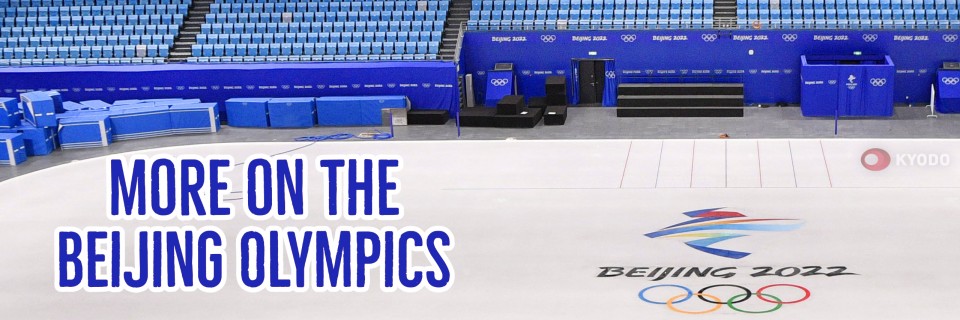[ad_1]
A Japanese acupuncturist who treats figure skater Misato Komatsubara’s injuries and keeps her performing at her peak is hoping his patient’s husband-wife ice dance team hits the right notes on the Beijing ice.
Yuki Akiyama is an acupuncturist who practices in his chiropractic clinic in the western Japan city of Okayama and has worked with the 29-year-old Komatsubara, one-half of Japan’s only ice dance team in Beijing, since 2019.

Acupuncturist Yuki Akiyama (2nd from L) poses for a photo with Tim Koleto (L) and Misato Komatsubara (R, front) around January 2019 in Okayama, western Japan. (Photo courtesy of Yuki Akiyama)(Kyodo)
Acupuncture is the ancient Chinese treatment of inserting needles in specific points on the body to manipulate the flow of energy or qi.
The figure skating discipline of ice dancing historically draws from ballroom dancing and often sees fans’ tongue-wagging over potential romantic links between the pairs. Some, like Komatsubara and her on-ice partner, are couples in real life.
Komatsubara, who is from Okayama Prefecture, switched from singles skating to ice dancing after high school and married American-born skater Tim Koleto in 2017. He took the name Takeru Komatsubara after he received Japanese citizenship in the fall of 2020.
“From the moment we met, we knew we had a special connection…We love every moment together and can’t wait for all that life has ahead of us,” they wrote on social media when announcing their marriage.
Acupuncture helped Misato recover after repeated concussions from spills during pre-games training led to chronic headaches and neck pain. Though brain scans did not reveal any issues, the symptoms affected her performance and forced her to skip major competitions.
“Misato has gotten a lifetime’s worth of neck work from me,” Akiyama said jokingly.
He helped open up her neck muscles and relieve tension, doing his part in alleviating Misato’s problems with the power of acupuncture — once thought to be akin to voodoo but now popular among athletes looking for solutions to their ills.
The 36-year-old also watched Takeru struggle to learn a new language, so when the couple brought the news about his naturalization, and his eligibility to represent Japan at the Olympics, Akiyama told them it was the best news he had heard in a long time.
In December, Akiyama traveled with the duo, who go by the moniker “Team Koko,” to the nationals where they won their fourth consecutive title and a ticket to the Beijing Games.
“I don’t know if it was a sense of relief, but when I saw their faces I cried with them,” Akiyama said.
The acupuncturist treated both skaters just before they departed for China.
Team Koko, who have been skating together for six years, made their Olympic debut on Friday in the team event at Beijing’s Capital Indoor Stadium. They will take to the ice again later this month as one of the 23 ice dance team entries.

Misato Komatsubara (R) and Tim Koleto of Japan perform in the ice dance rhythm dance in the figure skating team event at the Beijing Winter Olympics on Feb. 4, 2022, at the Capital Indoor Stadium. (Kyodo) ==Kyodo
The ice dance competition consists of two segments: a rhythm dance and a free dance.
The rhythm dance portion of the ice dance competition, which is slightly more restricted, will be held on Feb. 12. The free dance, where couples can perform almost any genre and dance pattern they choose, will be on Valentine’s Day on Feb. 14.
The scores from the rhythm dance and free dance are added together to determine the overall ranking.
“They finally get to compete on the big stage. I hope these games turn out to be good for the both of them,” Akiyama said.
Related coverage:
Olympics: Japan 4th on opening day of teams figure skating
Olympics:Coach Lambiel trying to turn own failures into Shoma Uno’s success
Olympics: Chen looks forward to reuniting with “inspiration” Hanyu


[ad_2]
Source link















